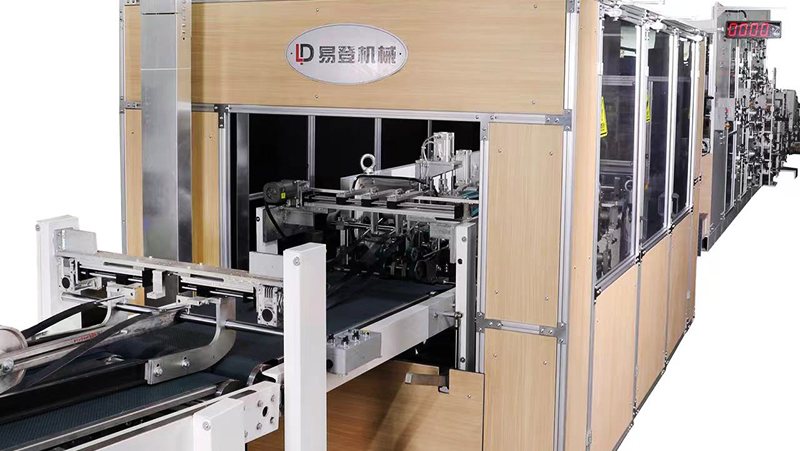The Engineering Marvel Behind Modern Valve Paper Sack Production Machinery
Release time:2025-05-26 Classification:Knowledge
The manufacturing of valve paper sacks—a critical component in industrial, agricultural, and consumer packaging—relies on highly specialized machinery designed to deliver precision, efficiency, and sustainability. Valve paper sack production machines represent a sophisticated fusion of mechanical engineering, automation, and material science, enabling the creation of durable, airtight packaging solutions tailored to diverse industries. This article explores the technical intricacies, operational workflows, and advantages of these advanced systems.

Anatomy of a Valve Paper Sack Production Machine
A valve paper sack production machine is a multi-stage assembly line engineered to transform raw materials—primarily kraft paper or laminated composites—into finished valve sacks. The process involves several integrated modules, each performing distinct functions:
- Unwinding and Feeding System
High-tension unwinders feed paper rolls into the machine while maintaining consistent alignment and tension control. Advanced sensors monitor material thickness and integrity to prevent jams or defects during high-speed operations. - Tube Forming Unit
Here, layered paper sheets are shaped into cylindrical tubes using precision rollers and adhesive application systems. The valve component—a critical feature for controlled filling and dust prevention—is integrated seamlessly into the tube structure during this phase. - Cross-Cutting and Bottom Sealing
Rotary knives cut the continuous tube into predefined lengths, after which the bottom of each sack is heat-sealed or glued to ensure structural integrity. Modern machines employ infrared or ultrasonic sealing technologies for leak-proof closures. - Valve Insertion Mechanism
A dedicated subsystem embeds the valve—typically a paper or polymer-based flap—into the sack’s top section. This step demands micron-level accuracy to guarantee proper alignment and functionality during filling operations. - Printing and Quality Inspection
Optional inline printing units apply branding or regulatory information, while vision systems and load testers verify sack dimensions, valve placement, and seal strength. Rejected units are automatically ejected to maintain production quality. - Stacking and Packaging
Finished sacks are counted, collated, and bundled using robotic arms or pneumatic systems, preparing them for palletization and shipment.
Operational Advantages of Valve Paper Sack Machinery
- High-Speed Production
Modern machines operate at speeds exceeding 200 sacks per minute, with servo-driven components ensuring synchronization across all stages. This efficiency minimizes downtime and maximizes output for large-scale packaging demands. - Material Optimization
Precision cutting algorithms and tension control systems reduce paper waste by up to 15% compared to conventional methods. Some models incorporate recycled material compatibility, aligning with global sustainability initiatives. - Adaptability
Quick-change modules allow rapid reconfiguration for different sack sizes, valve types (e.g., pinch valves, duckbill valves), and paper grades. This flexibility caters to industries ranging from cement and chemicals to food and pharmaceuticals. - Durability and Safety
Constructed from hardened steel and equipped with fail-safe mechanisms, these machines withstand 24/7 operation in harsh environments. Safety interlocks and emergency stop systems protect operators during maintenance or malfunctions.
Applications and Industry Impact
Valve paper sacks are indispensable in sectors requiring bulk handling of powders, granules, or viscous materials. Their one-way valve design enables dust-free filling without compromising product integrity, making them ideal for:
- Construction materials (cement, gypsum)
- Agricultural products (fertilizers, animal feed)
- Food-grade packaging (flour, sugar, additives)
The machinery’s ability to produce sacks with varying ply counts (2-6 layers), UV coatings, or moisture barriers addresses niche market requirements while maintaining cost-effectiveness.
Future Trends in Valve Sack Production Technology
Innovation in this field focuses on enhancing energy efficiency and smart manufacturing capabilities. Emerging developments include:
- AI-Powered Predictive Maintenance: Machine learning algorithms analyze vibration and temperature data to forecast component wear, reducing unplanned downtime.
- Eco-Friendly Adhesives: Bio-based glues and water-soluble sealants minimize environmental impact without sacrificing bond strength.
- IoT Integration: Real-time monitoring of production metrics via cloud platforms enables remote troubleshooting and supply chain optimization.
Valve paper sack production machines exemplify the convergence of tradition and technology in industrial packaging. By combining robust mechanical design with intelligent automation, these systems not only meet the growing demand for reliable, sustainable packaging but also pave the way for smarter, greener manufacturing practices. As industries continue to prioritize efficiency and ecological responsibility, the evolution of valve sack machinery will remain a cornerstone of modern material handling solutions.






